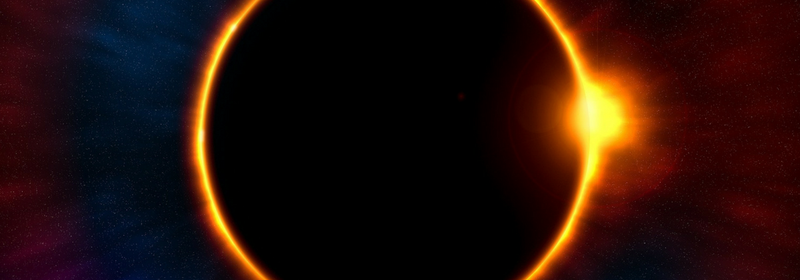
Solar Eclipse–Yeah, There’s an App for That!
6 Things You Can Learn and Do Today to Enjoy Monday’s Total Solar Eclipse
Article Header
« Return to Main PageSolar Eclipse–Yeah, There’s an App for That!
6 Things You Can Learn and Do Today to Enjoy Monday’s Total Solar Eclipse
Millions of Americans can’t wait for Monday when “The Great American Eclipse” takes it’s track across across the contiguous states. This will be the first time in 38 years that a total eclipse has been viewable in the US, so we’re a just little excited too!

Here are a few tips for viewing Monday’s celestial event, and yes, there’s an app to help you plan!
Know What to You’re Seeing
A solar eclipse occurs when the Moon passes in front of the Sun, thus blocking out its light. The Moon is only ¼ the size of Earth, so it pales in comparison to the size of the Sun. But, because the Sun is 94 million miles away from our planet, when a total solar eclipse occurs, the Moon blocks the Sun’s rays over a small part of Earth’s surface.
Solar eclipses are rare because the Moon must be in the “new moon” phase, which means it’s between Earth and the Sun. So, we’re “seeing” the dark side of the Moon, which makes it invisible. The new moon occurs every 29.5 days.
The reason we don’t see total eclipses very often has to do with the way Earth “wobbles” and the changing position of the Moon. Because of this, the Moon’s shadow typically falls above or beneath the Earth’s surface. Generally, the Moon and Earth’s orbits line up and an eclipse line up twice a year.
For the most part, the Moon is too far away from the Sun so that it doesn’t cover it completely. Monday’s eclipse will be unique in that the Moon will be close enough to block out the entire solar disk. Totality (when the Moon is directly in front of the Sun) only lasts for a few minutes, although the process to and from totality takes several hours.
Will I See the Eclipse in Totality?
There are numerous websites, including this one, that show the path of totality. If you don’t live in the path, it might be too late to book a hotel room, and if you are driving, be prepared for heavy traffic. The good news is, though, if you plan ahead, you can pack your lunch (and maybe dinner, too) and make a day of it.
Here in Greenville, South Carolina, we not only live in the path of totality, we have the benefit of Bob Jones University, which will be hosting an event where you’ll be able to experience the eclipse first-hand. Be sure to check out their website for event details!
Never Look Directly at the Sun
In the websites we’ve referred to, there are some great tips about how to prepare. The biggest tip, though, is to never look directly at the Sun! The American Astronomical Society website has some safe eclipse viewing tips.
What Can I Expect?
Your “Great American Eclipse” experience depends on where you are. Every one of the 48 contiguous states will see some percentage of the Sun disappear. The first location to see totality will be just north of Newport, Oregon, at about 10:15/PT. The path of totality will then go east and southeastward, exiting the US at Cape Romain, South Carolina, around 2:49/ET. Fourteen states are in the path. If you live in Carbondale, Illinois, you’re fortunate because you will be at the greatest point of totality–you’ll see the Sun eclipsed for 2 minutes, 42 seconds!
When is the Next Eclipse?
On April 8, 2024, the US will experience another total solar eclipse. This event will follow a different path, traveling from south central Texas to the northeast US. Viewers of the 2024 eclipse will experience a longer period of totality–in some places it can be as long as 4 minutes!
Yes, There’s an App!
Actually, there are a bunch of apps can you can download to your smartphone to help you plan for Monday’s event. We recommend the Totality by Big Kid Science app, which is available for iOS, and Android.









